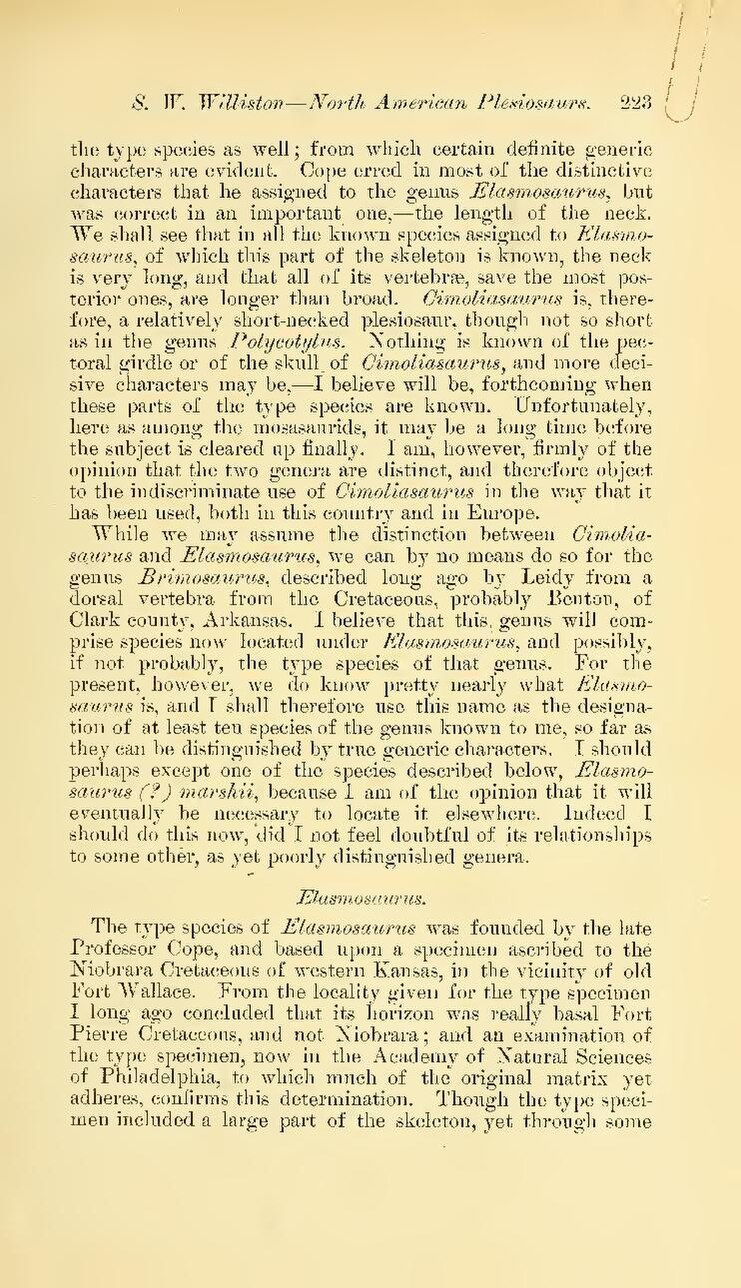the type species as well; from which certain definite generic characters are evident. Cope erred in most of the distinctive characters that he assigned to the genus Elasmosaurus, but was correct in an important one,—the length of the neck. We shall see that in all the known species assigned to Elasmosaurus, of which this part of the skeleton is known, the neck is very long, and that all of its vertebræ, save the most posterior ones, are longer than broad. Cimoliasaurus is, therefore, a relatively short-necked plesiosaur, though not so short as in the genus Polycotylus. Nothing is known of the pectoral girdle or of the skull of Cimoliasaurus, and more decisive characters may be,— I believe will be, forthcoming when these parts of the type species are known. Unfortunately, here as among the mosasaurids, it may be a long time before the subject is cleared up finally. I am, however, firmly of the opinion that the two genera are distinct, and therefore object to the indiscriminate use of Cimoliasaurus in the way that it has been used, both in this country and in Europe.
While we may assume the distinction between Cimoliasaurus and Elasmosaurus, we can by no means do so for the genus Brimosaurus, described long ago by Leidy from a dorsal vertebra from the Cretaceous, probably Benton, of Clark county, Arkansas. I believe that this, genus will comprise species now located under Elasmosaurus, and possibly, if not probably, the type species of that genus. For the present, however, we do know pretty nearly what Elasmosaurus is, and I shall therefore use this name as the designation of at least ten species of the genus known to me, so far as they can be distinguished by true generic characters. I should perhaps except one of the species described below, Elasmosaurus (?) marshii, because I am of the opinion that it will eventually be necessary to locate it elsewhere. Indeed I should do this now, did I not feel doubtful of its relationships to some other, as yet poorly distinguished genera.
The type species of Elasmosaurus was founded by the late Professor Cope, and based upon a specimen ascribed to the Niobrara Cretaceous of western Kansas, in the vicinity of old Fort Wallace. From the locality given for the type specimen I long ago concluded that its horizon was really basal Fort Pierre Cretaceous, and not Niobrara; and an examination of the type specimen, now in the Academy of Natural Sciences of Philadelphia, to which much of the original matrix yet adheres, confirms this determination. Though the type specimen included a large part of the skeleton, yet through some
